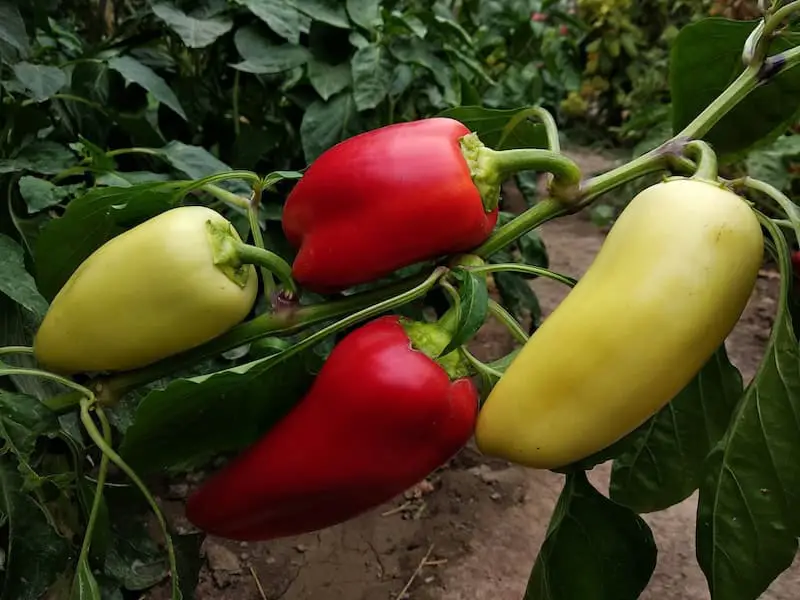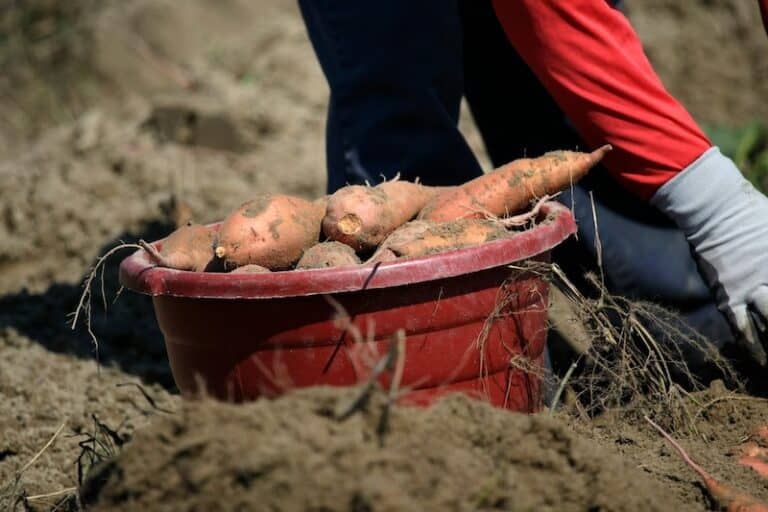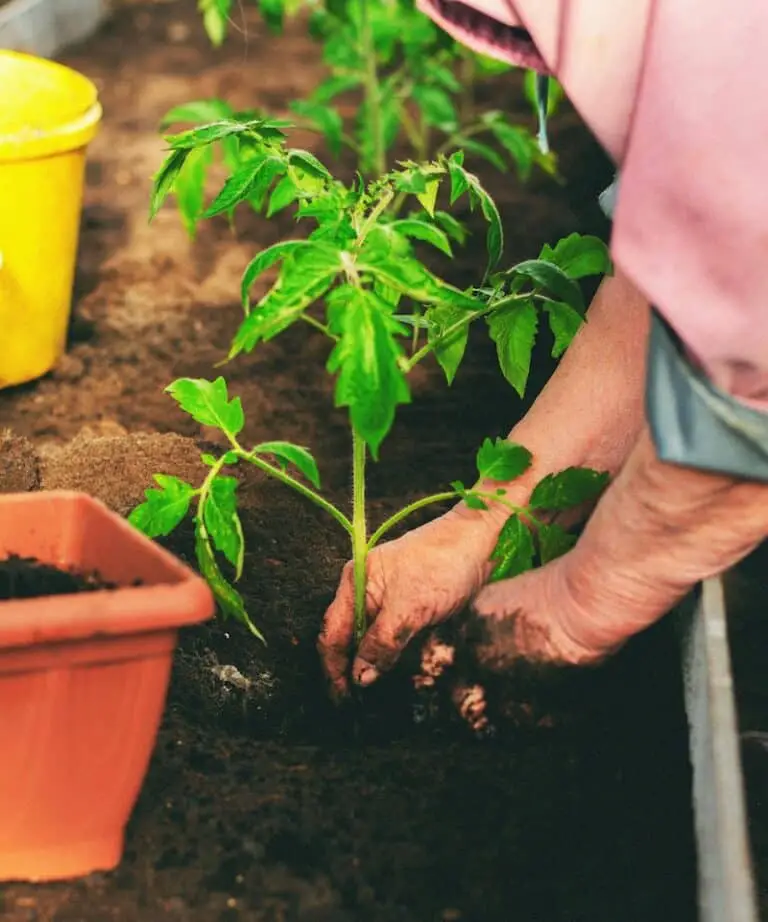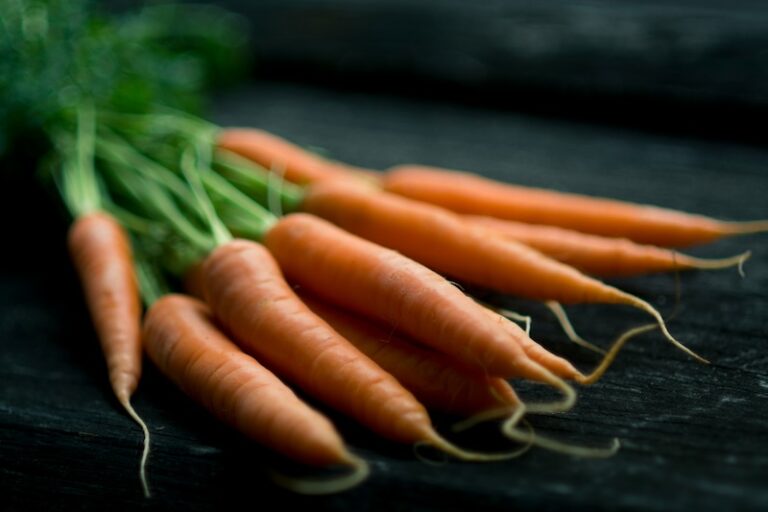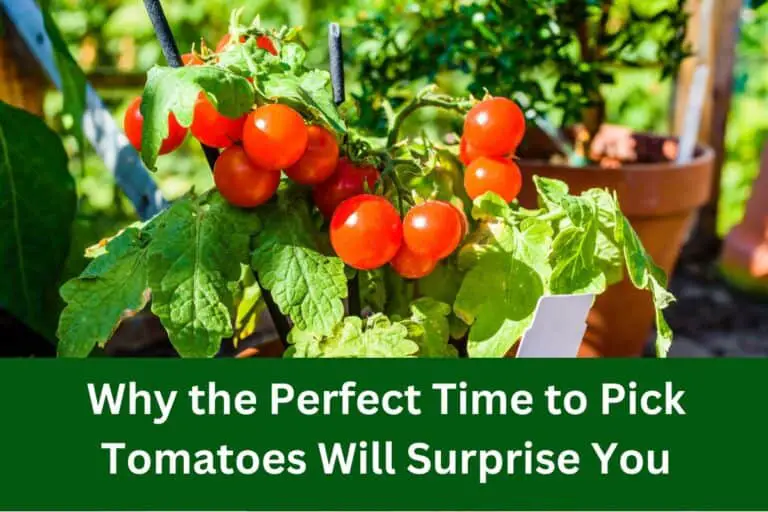21 Best Pepper Plants to Grow for a Thriving Vegetable Garden
Peppers are versatile plants that come in a myriad of shapes, sizes, flavors, and heat levels. They add vibrant colors and diverse tastes to your garden and culinary creations. Whether you’re a fan of sweet, mild peppers or fiery hot ones, there’s a variety out there for you. Here, we delve into 21 of the best types of pepper plants to grow in your vegetable garden, providing detailed information on each to help you decide which varieties are best for your garden.
1. Bell Peppers
Varieties: California Wonder, Bell Boy, Red Bell.
Description: Bell peppers are among the most popular and widely grown types of peppers. They are sweet, crunchy, and come in various colors, including green, red, yellow, orange, and even purple. They are rich in vitamins A and C and are great for salads, stir-fries, and stuffing.
Growing Tips: Bell peppers prefer warm, well-drained soil and need full sun. They require consistent watering and benefit from being staked or caged to support the heavy fruit.
2. Jalapeño Peppers
Varieties: Early Jalapeño, Jalafuego, Purple Jalapeño.
Description: Jalapeños are medium-sized, hot chili peppers with a Scoville rating of 2,500 to 8,000 units. They are commonly used in salsas, pickles, and Mexican dishes. They turn from green to red as they ripen, with red jalapeños being sweeter and slightly milder.
Growing Tips: Jalapeños thrive in full sun and well-drained soil. Regular watering is crucial, but avoid waterlogging the soil. Harvest them when they are firm and glossy.
3. Habanero Peppers
Varieties: Red Habanero, Orange Habanero, Chocolate Habanero.
Description: Known for their intense heat, habanero peppers have a Scoville rating of 100,000 to 350,000 units. They are small, lantern-shaped peppers with a fruity, citrus-like flavor. They are often used in hot sauces and spicy dishes.
Growing Tips: Habaneros need a long growing season with plenty of heat and sunlight. They prefer rich, well-drained soil and benefit from regular fertilization.
4. Cayenne Peppers
Varieties: Long Slim Cayenne, Carolina Cayenne, Cayenne Buist’s Yellow.
Description: Cayenne peppers are long, thin, and very hot, with a Scoville rating of 30,000 to 50,000 units. They are commonly dried and ground into a powder used to spice up dishes. Fresh cayenne peppers are also used in hot sauces and cooking.
Growing Tips: Cayenne peppers need full sun and well-drained soil. They should be watered regularly, and the plants benefit from being staked to support the weight of the peppers.
5. Banana Peppers
Varieties: Sweet Banana, Hot Banana, Hungarian Wax.
Description: Banana peppers are mild, sweet peppers that resemble bananas in shape and color. They are excellent for pickling, salads, and sandwiches. Hot banana peppers have a mild heat with a Scoville rating of 100 to 500 units.
Growing Tips: These peppers grow best in full sun and well-drained soil. They need regular watering and can be harvested when they reach 4-6 inches in length.
6. Poblano Peppers
Varieties: Ancho Poblano, Mulato Poblano.
Description: Poblano peppers are mild to medium-heat peppers with a Scoville rating of 1,000 to 2,000 units. They are large, dark green, and heart-shaped. When dried, they are known as ancho peppers. Poblanos are commonly used in Mexican cuisine, especially for making chile rellenos.
Growing Tips: Poblanos prefer full sun and well-drained soil. They need regular watering and can be harvested when they are firm and glossy.
7. Serrano Peppers
Varieties: Serrano Tampiqueño, Purple Serrano.
Description: Serrano peppers are small, thin, and hot, with a Scoville rating of 10,000 to 25,000 units. They are often used in salsas and sauces due to their bright, sharp flavor. Serranos are usually harvested green but can turn red, orange, or yellow when ripe.
Growing Tips: Serranos need full sun and well-drained soil. They require consistent watering and can be harvested when they reach 3-4 inches in length.
8. Anaheim Peppers
Varieties: New Mexico No. 9, Big Jim, Hatch.
Description: Anaheim peppers are mild, large, and versatile, with a Scoville rating of 500 to 2,500 units. They are great for roasting, stuffing, and grilling. These peppers are also known as New Mexico peppers when grown in New Mexico.
Growing Tips: Anaheim peppers thrive in full sun and well-drained soil. They need regular watering and can be harvested when they reach 6-10 inches in length.
9. Cubanelle Peppers
Varieties: Sweet Cubanelle, Golden Cubanelle.
Description: Cubanelle peppers are mild and sweet with a Scoville rating of 100 to 1,000 units. They are often used in frying and can be a great substitute for bell peppers in recipes. They have a thin flesh and are usually harvested when light green.
Growing Tips: Cubanelle peppers grow best in full sun and well-drained soil. They require consistent watering and can be harvested when they reach 4-6 inches in length.
10. Thai Peppers
Varieties: Thai Hot, Thai Dragon, Bird’s Eye.
Description: Thai peppers are small, very hot, and have a Scoville rating of 50,000 to 100,000 units. They are commonly used in Asian cuisine for their intense heat and distinct flavor. These peppers can be green, red, or yellow when mature.
Growing Tips: Thai peppers need full sun and well-drained soil. They should be watered regularly and can be harvested when they reach 1-2 inches in length.
11. Ghost Peppers
Varieties: Bhut Jolokia, Red Ghost, Chocolate Ghost.
Description: Ghost peppers are extremely hot, with a Scoville rating of over 1,000,000 units. They have a fruity, sweet flavor that pairs well with their intense heat. These peppers are used sparingly in sauces and dishes that require a significant amount of heat.
Growing Tips: Ghost peppers require a long, hot growing season and full sun. They prefer rich, well-drained soil and need regular watering and fertilization.
12. Pepperoncini Peppers
Varieties: Greek Pepperoncini, Italian Pepperoncini.
Description: Pepperoncini peppers are mild and tangy with a Scoville rating of 100 to 500 units. They are often pickled and used in salads, sandwiches, and antipasto platters. These peppers are typically harvested when green or yellow-green.
Growing Tips: Pepperoncini peppers grow best in full sun and well-drained soil. They need consistent watering and can be harvested when they reach 2-4 inches in length.
13. Scotch Bonnet Peppers
Varieties: Jamaican Red, Yellow Scotch Bonnet, Trinidad Scotch Bonnet.
Description: Scotch Bonnet peppers are very hot with a Scoville rating of 100,000 to 350,000 units. They have a fruity, tropical flavor and are often used in Caribbean cuisine. These peppers are typically red or yellow when ripe.
Growing Tips: Scotch Bonnets require a long, hot growing season and full sun. They prefer rich, well-drained soil and benefit from regular fertilization.
14. Shishito Peppers
Varieties: Japanese Shishito, Mellow Star.
Description: Shishito peppers are mild and sweet with a Scoville rating of 100 to 1,000 units. They are often blistered or charred and served as an appetizer. Most shishitos are mild, but occasionally one will have a bit of heat.
Growing Tips: Shishito peppers thrive in full sun and well-drained soil. They need regular watering and can be harvested when they are about 3-4 inches long.
15. Cherry Peppers
Varieties: Hot Cherry, Sweet Cherry, Pimiento.
Description: Cherry peppers are small, round, and can be either hot or sweet. They are often used for pickling or stuffed with cheese and meats. Sweet varieties are mild, while hot varieties have a Scoville rating of 2,500 to 5,000 units.
Growing Tips: Cherry peppers grow best in full sun and well-drained soil. They require consistent watering and can be harvested when they are firm and glossy.
16. Fresno Peppers
Varieties: Fresno Chili, Red Fresno.
Description: Fresno peppers are medium-hot with a Scoville rating of 2,500 to 10,000 units. They are similar in appearance to jalapeños but have a fruitier, smokier flavor. Fresnos are great in salsas and hot sauces.
Growing Tips: Fresno peppers need full sun and well-drained soil. They require regular watering and can be harvested when they are firm and glossy.
17. Piquillo Peppers
Varieties: Spanish Piquillo,
Pimiento de Padrón.
Description: Piquillo peppers are sweet, mild peppers with a Scoville rating of 500 to 1,000 units. They are often roasted and used in Spanish cuisine. These peppers are typically red when ripe.
Growing Tips: Piquillo peppers thrive in full sun and well-drained soil. They need regular watering and can be harvested when they are firm and glossy.
18. Aji Amarillo Peppers
Varieties: Peruvian Aji, Yellow Aji.
Description: Aji Amarillo peppers are medium-hot with a Scoville rating of 30,000 to 50,000 units. They have a fruity, citrus-like flavor and are commonly used in Peruvian cuisine. These peppers are typically orange or yellow when ripe.
Growing Tips: Aji Amarillo peppers need full sun and well-drained soil. They require regular watering and can be harvested when they reach 4-6 inches in length.
19. Pasilla Peppers
Varieties: Pasilla Bajio, Chilaca.
Description: Pasilla peppers are mild to medium-hot with a Scoville rating of 1,000 to 2,500 units. They have a rich, smoky flavor and are often used in Mexican mole sauces. These peppers are typically dark green to brown when ripe.
Growing Tips: Pasilla peppers grow best in full sun and well-drained soil. They need regular watering and can be harvested when they reach 6-9 inches in length.
20. Datil Peppers
Varieties: St. Augustine Datil, Golden Datil.
Description: Datil peppers are very hot with a Scoville rating of 100,000 to 300,000 units. They have a sweet, fruity flavor and are often used in hot sauces and spicy dishes. These peppers are typically yellow or orange when ripe.
Growing Tips: Datil peppers require a long, hot growing season and full sun. They prefer rich, well-drained soil and benefit from regular fertilization.
21. Aleppo Peppers
Varieties: Halaby, Turkish.
Description: Aleppo peppers are mild to medium-hot with a Scoville rating of 10,000 to 30,000 units. They have a fruity, slightly tangy flavor and are often dried and ground into a spice used in Middle Eastern cuisine.
Growing Tips: Aleppo peppers thrive in full sun and well-drained soil. They need regular watering and can be harvested when they reach 4-6 inches in length.
Conclusion
Growing peppers in your vegetable garden can be a rewarding experience, offering a range of flavors and heat levels to suit any palate. From sweet bell peppers to fiery ghost peppers, there’s a variety for every gardener and every dish. By understanding the specific needs and characteristics of each type, you can successfully cultivate a diverse and productive pepper garden. Happy gardening!

